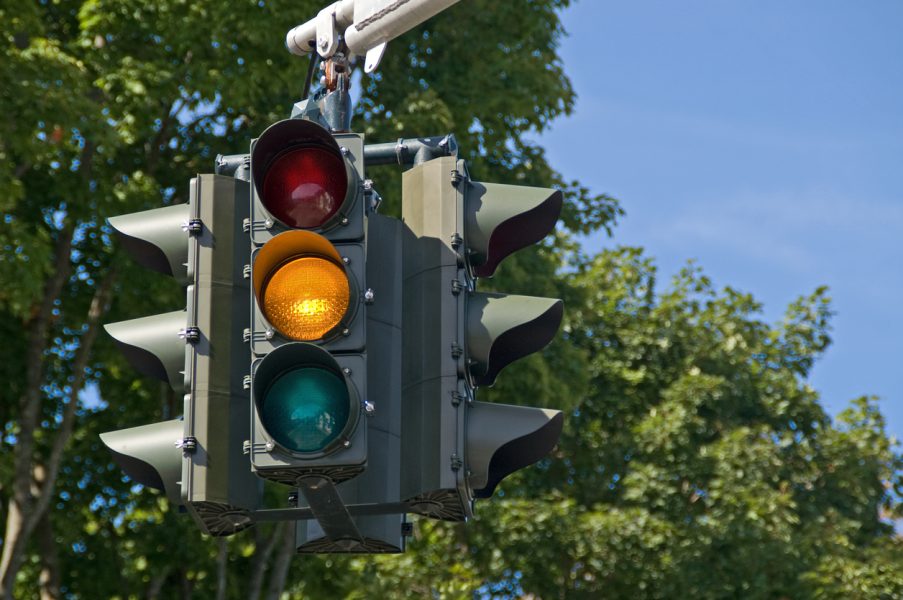
Explained: How street furniture will be roped in to stream 5G to you

Ahead of the much-awaited rollout of 5G services in India, telecom regulators are preparing to use street furniture, including electric poles, advertisement hoardings, traffic lights and bus terminals, to set up low power base stations known as “small cells”, which will aid in providing high-capacity and reliable broadband.
What are small cells?
Small cells are portable, low-power and short-range wireless transmission or base systems that cover a small geographical area ranging between a few metres and a few hundred metres. As their coverage radius is short, they need to be installed in large numbers – at least more than 200 per sq km – for better coverage.
Small cells are used for the deployment of 5G as they will help the waves travel in a lower wavelength and thus for a shorter distance, both of which are vital to achieving a higher frequency band.
Also read: Airtel to launch 5G services in a month, existing SIMs will support 5G network
While telecom towers, which offer 4G network, are usually placed at a distance of 5 km from one another and at a height of 30 metres, small cells will have to be installed every 100-150 metres and at a height of 6-7 metres for the 5G waves to travel in a higher frequency of 3.3-3.6 GHz.
In a consultation paper titled ‘Use of street furniture for small cell and aerial fiber deployment,’ the Telecom Regulatory Authority of India (TRAI) has underlined the importance of small cells in the success in the 5G network, as these are crucial for 5G features like low latency, ultra-high speeds and massive connection densities.
Why street furniture?
Street furniture are not only budget-friendly and would save telecom operators from setting up a new network of 5G poles, but it also consumes less energy.
Experts say that while poles of the height of 6-7 metres are the best for the installation of small cells, they are already existent in the form of street lights, hoardings and traffic posts.
SP Kochhar, director general at Cellular Operators Association of India told The Hindu that the coverage would be adequate if small cells are installed within 100 metres of each pole.
Work on war footing for October launch
Reports say that Gujarat and Uttar Pradesh have already completed identifying potential street furniture for the deployment of small cells, while the government is urging other states to wrap up the mapping process soon.
TRAI has already done pilot runs on street furniture and small cell deployment in Madhya Pradesh.
The mapping exercise by states is being done under the guidance of Gujarat-based Bhaskaracharya Institute for Space Applications and Geoinformatics (BISAG-N).
After several rounds of inter-ministerial discussions, the government recently instructed states to map four additional categories of data layers – electric poles, traffic light poles, bus terminals and shelters and government buildings – to their master plans.
The instruction was relayed in the form of a memorandum by Team Gati Shakti, the government’s digital platform for logistics.
Also read: 5G roll-out would precede its meaningful adoption in India: Credit Suisse
While the National Broadband Mission had recently suggested the inclusion of electric poles in the data layers that are being mapped by states under the ‘power transmission and distribution’ category of Gati Shakti, it had urged the Department for Promotion of Industry and Internal Trade (DPIIT) to request states to identify potential street furniture which could help in the deployment of small cells.
Following this, the DPIIT updated 24 data layers needed for the telecom network.
Last week, the Department of Telcom also notified the amended Right of Way (RoW) Rules, which would allow the deployment of 5G small cells on existing street infrastructure for a launch most likely in October. The amendments which include a single window clearance system and a streamlined pricing, will also allow telecom companies to use street infrastructure at a nominal cost of ₹150 per annum in rural areas and ₹300 per annum in urban areas.
Also read: Jio 5G to launch in 4 cities by Diwali; pan-India coverage by December 2023
Under the new rules, licensees can strike agreements with private property owners without needing any government approval to install telecom infrastructure.


